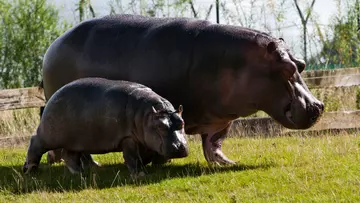
In Classification: Hippo Case Study, students investigate how and why scientists classify animals. Using hippos as a focal point they will look at observable characteristics and phylogenetic trees to compare the different methods of classifying animals as well as how modern technologies have altered taxonomical decisions. They will also explore the real world uses of classification, such as how ZSL uses taxonomy to help make conservation decisions.
Specimens used in this session have been donated to Whipsnade Zoo by HM Revenue and Customs.
| Age: Post 16 | Duration: 60mins | Capacity: 35 students | Indoor workshop |

Intended learning outcomes:
Students will be able to:
- List and compare the strengths and weaknesses of the different approaches that have been used to classify species
- Work in groups to determine the lineage of a range of species using a classification toolkit
- List ways in which taxonomical decisions have changed with the advent of modern technologies
- Describe how species evolve into the species we see today
- Describe how the zoo uses classification and phylogenetic trees to help in making conservation decisions.
Additional Resources:
- Support your students' learning before, during or after a visit with our online teaching resources.
AQA Biology AS & A Level
|
Pearson Edexcel A Level Biology A (Salters-Nuffield)
|
Pearson Edexcel A Level Biology B
|
OCR A Level Biology A
|
OCR A Level Biology B
|
Cambridge International AS & A Level Biology
|
